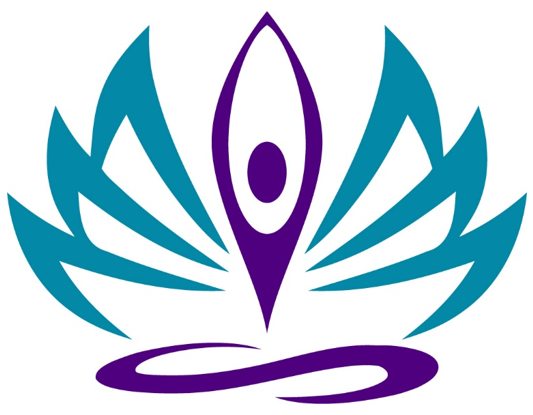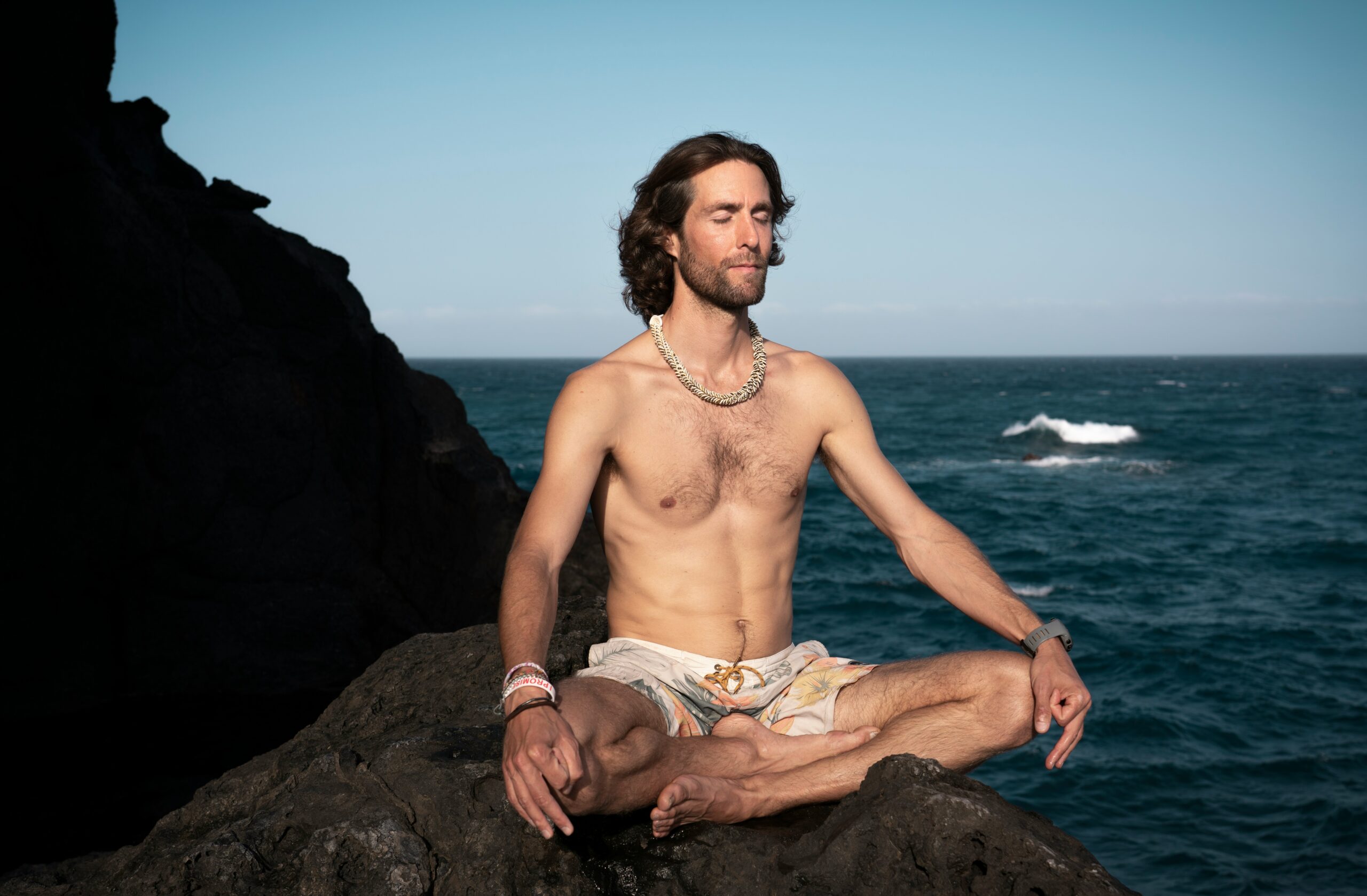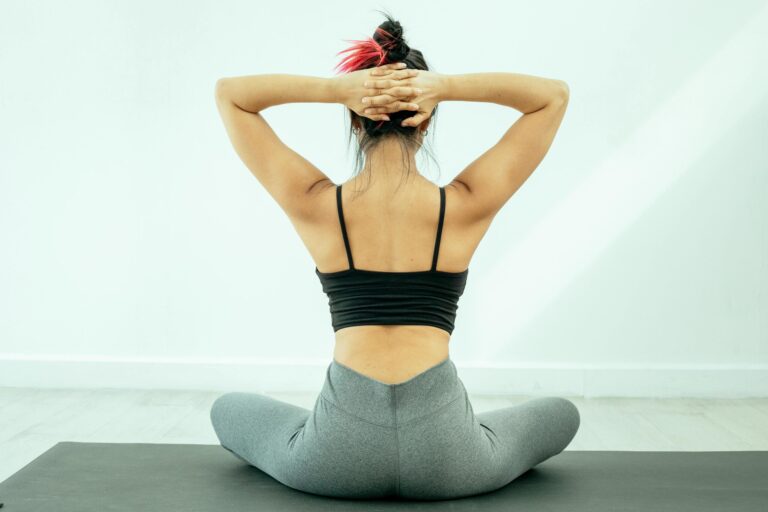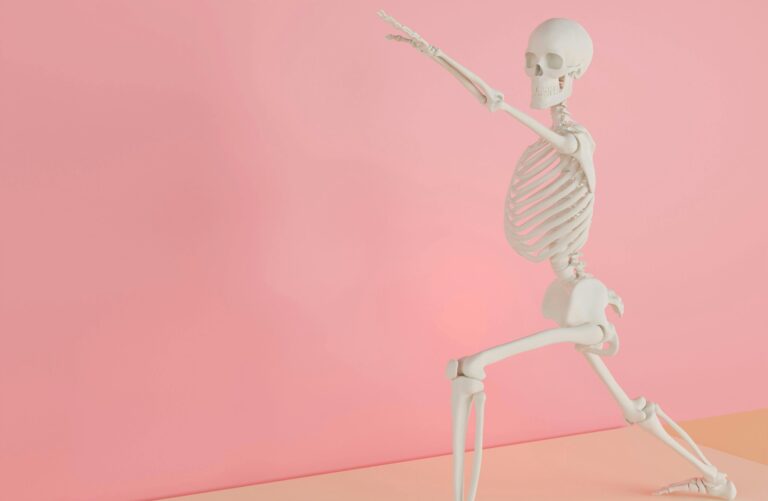Yoga for men: more flexibility in the pelvis through asymmetrical practice
Many men experience the pelvis as an area of restriction, tension or instability. Although yoga is generally known as a good method for releasing tension and movement restrictions, nowadays there are more women than men in most yoga classes. As a result, there are few specific classes for men (although yoga was traditionally for young men).
Many yoga teachers lack the anatomical knowledge to specifically adapt their practice to the male body. A suitable yoga practice for most men should take into account the entire pelvic mobility, with a focus on internal rotation, as well as balancing asymmetrical tension patterns that often further restrict pelvic mobility.
Why men in particular benefit from targeted pelvic work
The male pelvis is usually anatomically narrower and more stable than the female pelvis. At the same time, there is often a lack of elastic mobility in the deep abdominal, pelvic and trunk muscles. Many men compensate for a lack of mobility by putting too much tension on the adductors, lower back or buttocks. This can lead to complaints such as a hollow back, SI joint problems, groin pain or restricted hip rotation. The compensations and differences in tension are often subjectively or objectively more pronounced than in women.
Asymmetric practice: why it is so effective
The human body is fundamentally asymmetrical, which is characterized by the so-called Left AIC/Right BC Pattern described by the Postural Restoration Institute. This shows a functional asymmetry in which the left side of the pelvis tilts forward and there is a slight overall rotation of the pelvis and lumbar spine to the right. This results in compensations in the torso, ribs and shoulders, which lead to a lower right shoulder in most cases.
A symmetrical yoga practice often cannot adequately address these imbalances. Only through asymmetrical exercises - e.g. unilateral stretching or muscle activation, as well as restoring muscle activity in certain muscle groups (often the back of the thighs) - can such patterns be specifically addressed.
Yoga for a mobile and stable pelvis: Exercise ideas
I have recorded a 60-minute practice specifically for the needs of men with a focus on pelvic mobility. You can watch it for free on my YouTube channel:
If you would prefer to do the exercises for yourself without a video, you will find some specific asanas below that are particularly useful for men - consciously one-sided to specifically compensate for asymmetries:
1. unilateral piriformis stretch while lying down
(Supta Kapotasana - modified reclining pigeon)
- Lie on your back and place both feet on the mat.
- Lift your left foot and place the outside of your ankle on your right knee.
- Lift your right leg off the floor and grasp the back of your right thigh with both hands.
- Gently pull your leg towards you - you will feel a stretch in your left buttock.
- Gently rock from left to right. If you want to deepen the stretch, actively push your left knee away from you.
- Perform this exercise only on the left side from.
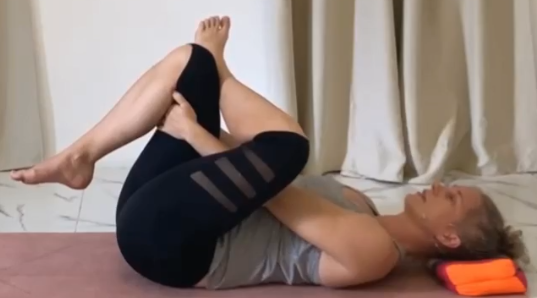
This exercise helps to stretch the piriformis muscle on the left to achieve more range of motion for internal rotation (left side of the pelvis is in a more outwardly rotated position than the right according to the left AIC pattern).
2. one-sided "cycling" with trunk activation
- Maintain the starting position from the previous exercise: Lie on your back with your left foot resting on your right knee.
- Activate your abdominal muscles by pressing your lower back into the floor.
- Raise your right leg to a 90/90 degree angle (right angle at the hip and knee).
- As you exhale, stretch your right leg long upwards, keeping your foot flexed.
- As you inhale, bend your leg again and bring it back to a 90/90 degree angle.
- Repeat this movement 5-6 times.
- Then slowly lower your outstretched leg towards the floor.
- Perform this exercise only with the right leg from.
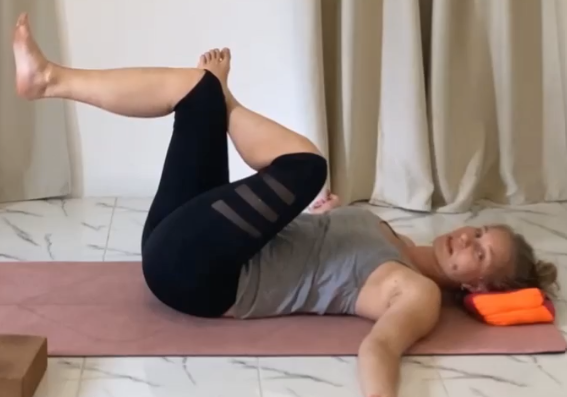
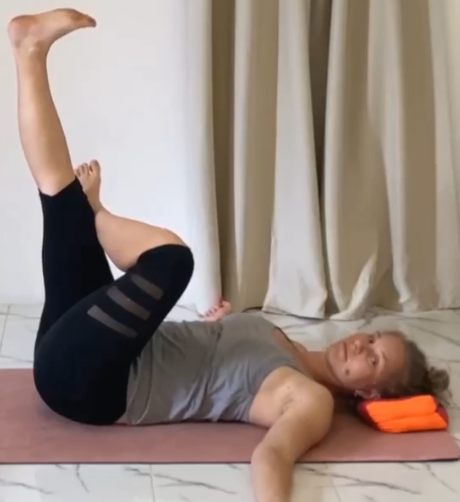
This exercise strengthens the right psoas muscle, which according to left AIC has less tension than the left.
3rd windshield wiper variant with rotation
- Lie on your back, place your feet on the mat and let your knees sink to the left and right a few times.
- Then stay on your right side and place your right foot on the outside of your left knee.
- Gently push the left side of your pelvis away from you and gently activate your abdominal muscles.
- Optionally, stretch the left arm further up to stretch the left flank while taking deep diaphragmatic breaths.
- Stay here for 4-6 deep breaths.
- Perform this exercise only to the right from.

This rotation exercise mobilizes the lower back and stretches the left side of the pelvis to create more space for internal rotation. It also supports diaphragm activation on the left side (usually chronically under-activated as part of the Left AIC/Right BC pattern).
4. happy baby (Ananda Balasana)
- Lie on your back and grasp the outside of your feet or shins while your knees sink outwards.
- Keep the soles of your feet parallel to the ceiling and gently pull your knees towards your armpits.
- The lower back remains as grounded as possible.
- Breathe deeply and gently rock from side to side to mobilize the pelvis.
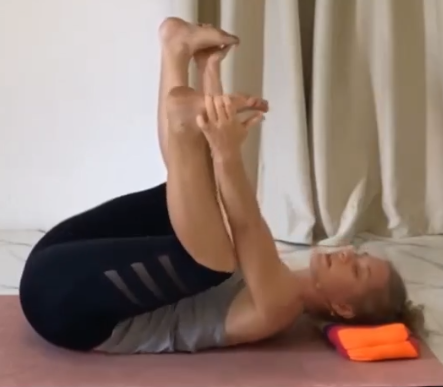
This exercise works on both sides, but has a balancing character that brings balance after one-sided mobilization work. It releases tension in the lower back, adductors and pelvic floor. The strong hip flexion in this position also promotes outward rotation in the pelvis. This rotation is also often limited in men, as the pelvis is "stuck" in one position. Although this position is usually already an externally rotated position, it does not mean that further active outward rotation is possible. This position also promotes relaxation and deep breathing, which supports the integration of the previous exercises.
5. unilateral hip extension with pelvic stabilization
- Lie on your back and pull your right knee towards you.
- Stretch your left leg out as if you were pressing your flexed foot into an imaginary wall.
- The left thigh remains actively directed towards the floor.
- The abdominal muscles are gently activated to create length in the front of the left hip.
- Do this exercise too only one-sided right from.

This exercise helps to stretch shortened left hip flexor muscles (especially the psoas) - a central goal when working with the Left AIC Pattern to balance the pelvic position.
Conclusion: More alignment, less compensation
Yoga can help men to develop a deeper body awareness and a new connection to the pelvis. Muscular imbalances are recognized and corrected through targeted asymmetrical exercises. This creates more flexibility, alignment and stability - in the pelvis and throughout the entire body. After all, a stable pelvis is the basis for healthy strength development and a balanced everyday life.
Tip: Don't repeat the exercises symmetrically left and right, but observe where you need more length, connection and alignment. Here you can consciously asymmetrical practice! You can find even more information and benefits of an asymmetrical yoga practice here here.
